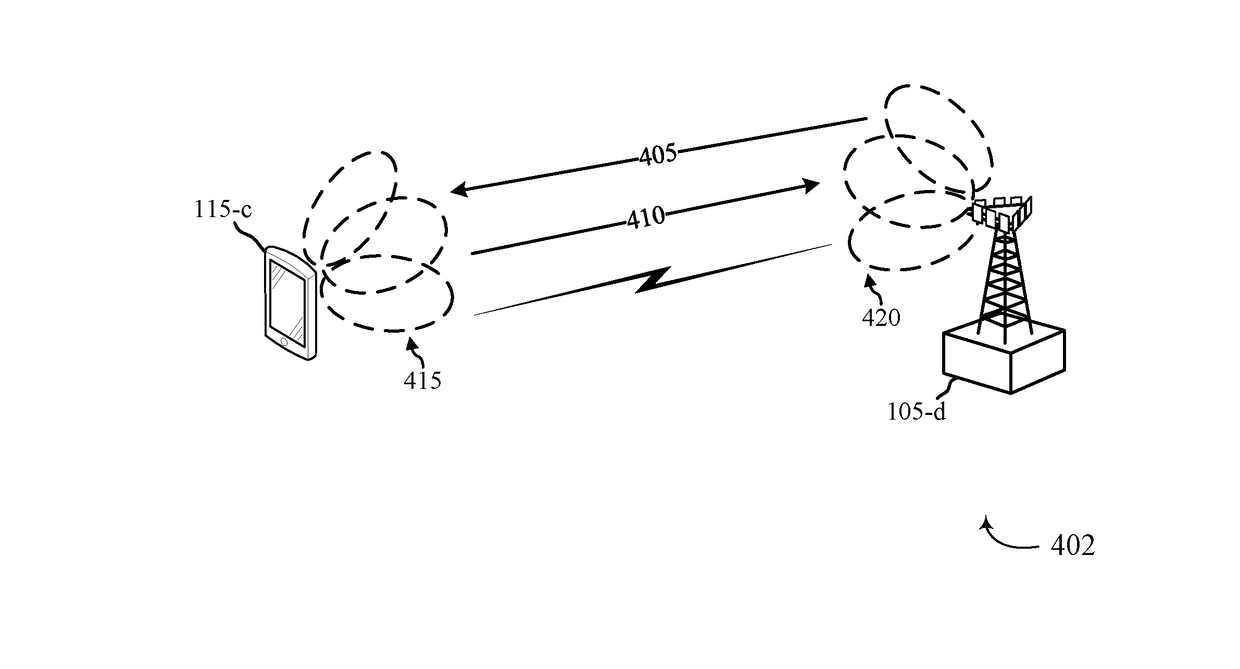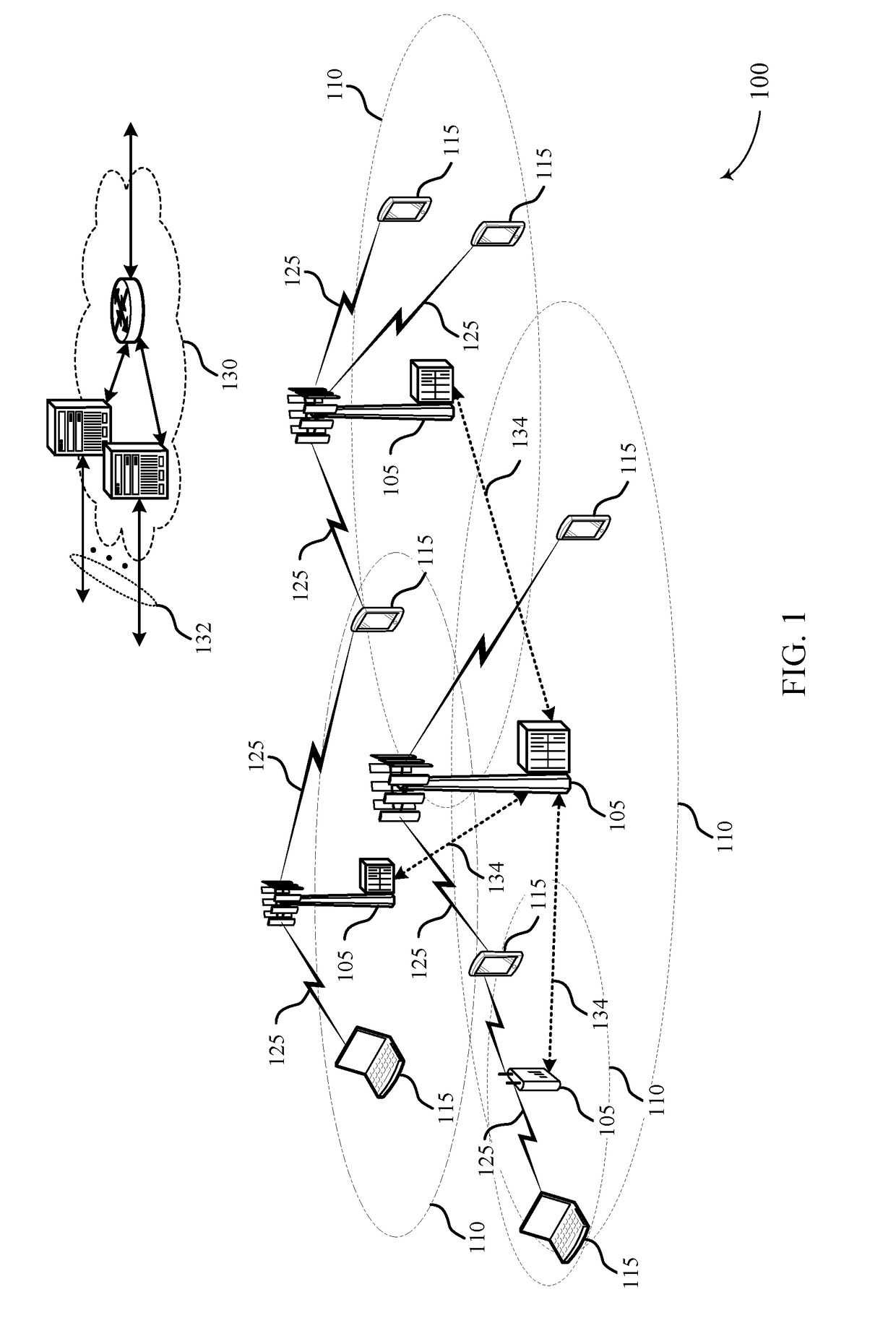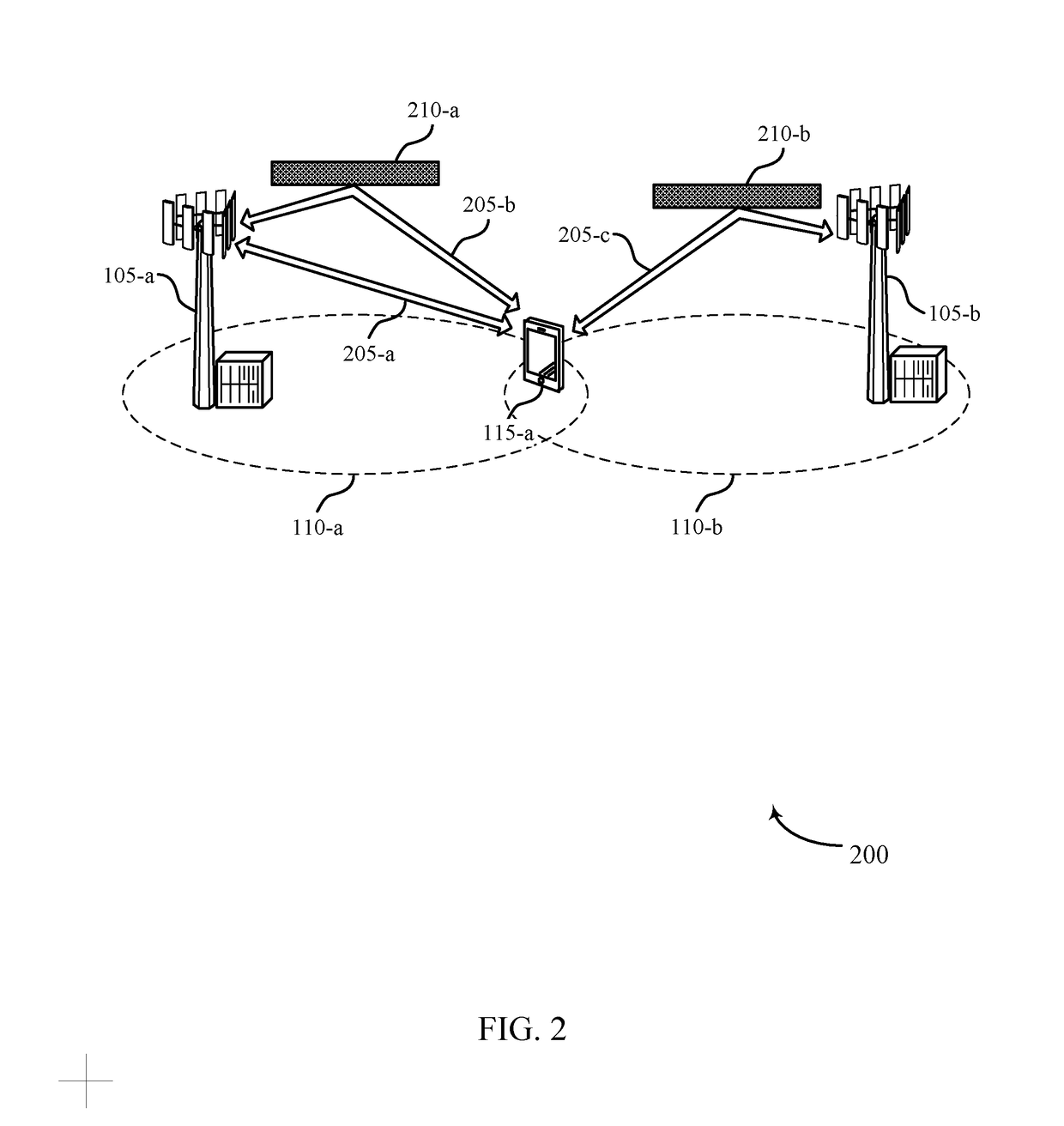[0007]Systems, methods, and apparatuses for beam shaping at a millimeter wave base station, and for fast selection of an antenna subarray at a wireless device are described. In accordance with the present disclosure, a wireless communications system may improve user equipment (UE) discovery latency by dynamically selecting and switching beamforming codebooks at the millimeter wave base station and the wireless device. Selecting an optimal beamforming codebook may allow the wireless communication system to improve link margins between the base station without compromising resources. In some examples, a wireless device may determine whether the received signals from the millimeter wave base station satisfy established signal to noise (SNR) thresholds. The wireless device may then select an optimal beam codebook to establish communications with the millimeter wave base station. Additionally or alternately, the wireless device may further signal the selected beam codebook to the millimeter wave base station and direct the millimeter wave base station to adjust its codebook based on the selection.
[0008]In accordance with the present disclosure, the user equipment (UE) may scan through a plurality of antenna subarrays one at a time with a single beamforming vector to estimate the signal to noise ratio (SNR) at the plurality of antenna subarrays. Based on the estimated SNR, the UE may determine whether the received signals are above or below an established SNR threshold level at the plurality of antenna subarrays. In some examples, the UE may select an antenna subarray from a plurality of scanned antenna subarrays that offers the desired signal quality. Additionally or alternately, the UE, after selecting an antenna subarray, may further refine the codebook of beamforming vectors at the UE and the base station in order to achieve improved link margins for the subsequent data phase between the base station and the UE.
[0017]Some examples of the method, apparatuses, or non-transitory computer-readable medium described above may further include processes, features, means, or instructions for transmitting the second signal over a low-frequency carrier network coexisting with a millimeter wave carrier network. Additionally or alternately, in some examples the second signal comprises a distress signal transmitted with a unique identification at a high code rate. A high code rate signal is one where the redundancy for overcoming noise and fading uncertainties is high with the useful information at a much lower rate, which ensures reliable information recovery in poor channel conditions.
[0023]In some examples of the method, apparatuses, or non-transitory computer-readable medium described above, the subarray selection codebook may include a coarse codebook of broad beams covering a wide beamspace area optimally designed to minimize the wireless device discovery latency at the cost of peak beamforming gain. The subarray selection codebook may also include an intermediate codebook of slightly narrower beams covering a smaller beamspace area and corresponding to another point in the tradeoff curve between wireless device discovery latency and peak beamforming gain. The subarray selection codebook may also include a fine codebook of the narrowest beams covering the smallest beamspace area and corresponding to the highest peak beamforming gain. The subarray selection codebook may also include a codebook appropriately designed to mitigate near-field impairments at the wireless device. The subarray selection codebook may also include a codebook with a special structure appropriately designed to assist in channel estimation tasks at the wireless device. The subarray selection codebook may also include a codebook with a special structure appropriately designed to assist in radio-frequency hardware and / or software complexity reduction, reduce system complexity or cost. The subarray selection codebook may also include a pseudo-omni beam pattern codebook, or an antenna selection codebook. The subarray selection codebook may also include any combination of beamforming vectors from different codebooks thereof.
[0027]A subarray selection codebook can include a coarse codebook of broad beams covering a wide beamspace area optimally designed to minimize the wireless device discovery latency at the cost of peak beamforming gain. Additionally or alternately, the subarray selection codebook can include an intermediate codebook of slightly narrower beams covering a smaller beamspace area and corresponding to another point in the tradeoff curve between wireless device discovery latency and peak beamforming gain. Additionally or alternately, the subarray selection codebook can include a fine codebook of the narrowest beams covering the smallest beamspace area and corresponding to the highest peak beamforming gain. Additionally or alternately, the subarray selection codebook can include a codebook appropriately designed to mitigate near-field impairments at the wireless device. Additionally or alternately, the subarray selection codebook can include a codebook with a special structure appropriately designed to assist in channel estimation tasks at the wireless device. Additionally or alternately, the subarray selection codebook can include a codebook with a special structure appropriately designed to assist in radio-frequency design, reduce system complexity or cost. Additionally or alternately, the subarray selection codebook can include a pseudo-omni beam pattern codebook, and / or an antenna selection codebook. Additionally or alternately, the subarray selection codebook can include a combination of beamforming vectors from different codebooks.
 Login to View More
Login to View More  Login to View More
Login to View More 


